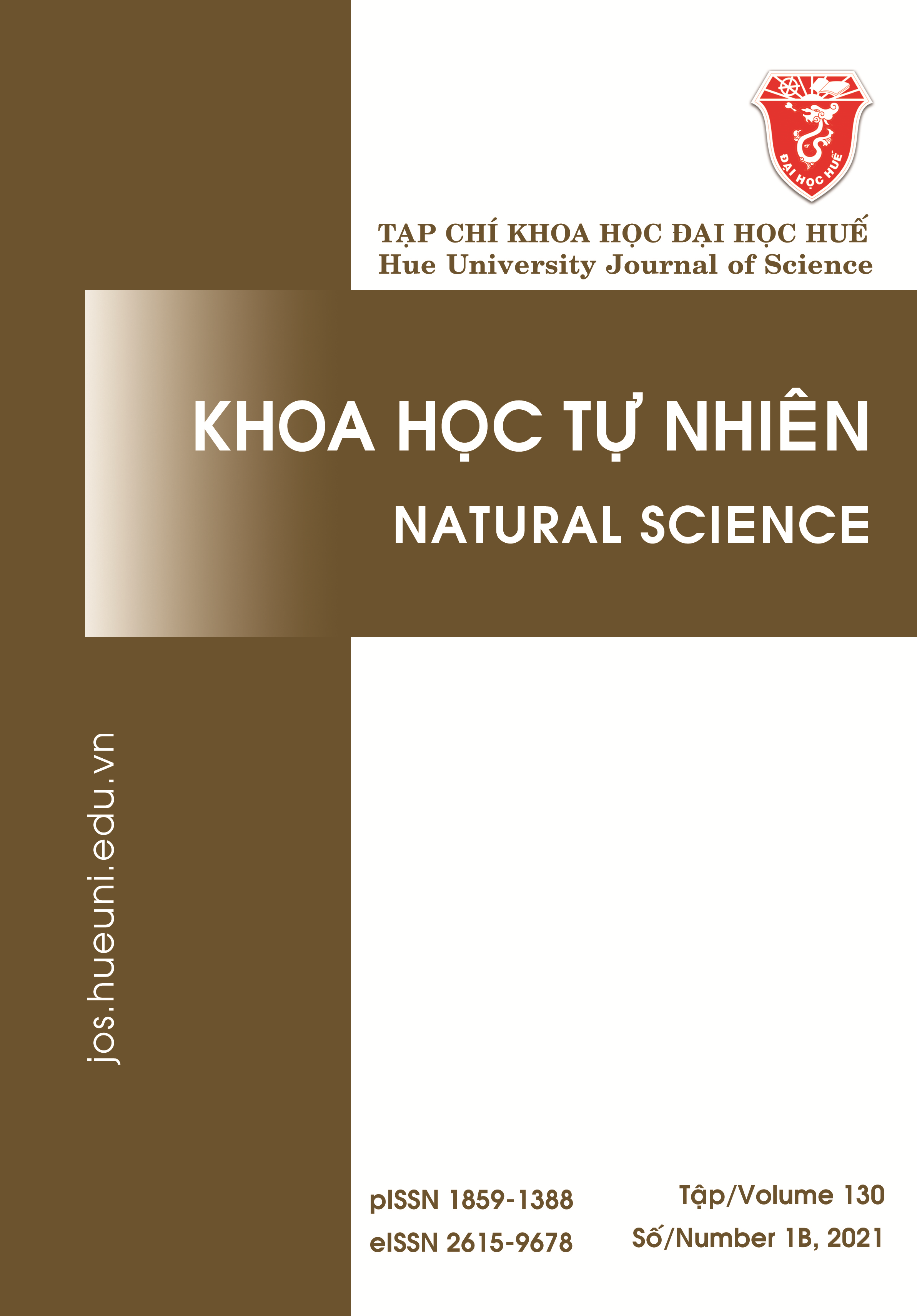Abstract
In this study, Bi0.5(Na1–xKx)0.5SnO3 (BNKS) ceramics (x = 0, 0.1, 0.2, 0.3, and 0.4) were fabricated via ultrasound wave before milling. The time of ball milling decreased from 20 to 1 h. The X-ray diffraction patterns show that the BNKS has a single-phase structure. When the potassium content increases, the phase structure of the ceramics changes from rhombohedral to tetragonal. When sintered at 1100 °C and x = 0.2, the ceramics’ physical properties are the best with the mass density of 5.59 g/cm3, the electromechanical coupling constants kp of 0,31 and kt of 0.27, the remanent polarization of 11.9 µC/cm; the dielectric constant εr of 1131, and the highest dielectric constant emax of 4800.
References
- Xu Y. Ferroelectric Materials and Their Applications. Amsterdam-London-New York-Tokyo: North-Holland; 1991.
- Luan NDT, Vuong LD, Chuong TV, Tho NT. Structure and Physical Properties of PZT-PMnN-PSN Ceramics near the Morphological Phase Boundary. Advances in Materials Science and Engineering. 2014;2014:1-8. DOI: https://doi.org/10.1155/2014/821404
- Tho NT, Vuong LD. Fabrication and characterization of PZT-PMnN-PSbN ceramics doped with ZnO. Hue Universiy Journal of Science: Natural Science. 2020; 129(1D):5-13. DOI: https://doi.org/10.26459/hueuni-jns.v129i1D.5771
- Inoue A, Nguyen TT, Noda M, Okuyama M. Low temperature preparation of bismuth-related ferroelectrics by hydrothermal synthesis. 2007 Sixteenth IEEE International Symposium on the Applications of Ferroelectrics. 2007;136-137. DOI: https://doi.org/10.1109/isaf.2007.4393193
- Nguyen TT, Kanashima T, Okuyama M. Leakage current reduction and ferroelectric property of BiFe1-xCoxO3 thin films prepared by chemical solution deposition using rapid thermal annealing. MRS Proceedings. 1199(1):114-119. DOI: https://doi.org/10.1557/proc-1199-f06-19
- Tho NT, Inoue A, Noda M, Okuyama M, Low temperature preparation of bismuth-related ferroelectrics powder and thin films by hydrothermal synthesis. IEEE Transactions on Ultrasonics, Ferroelectrics and Frequency Control. 2007;54(12):2603-2607. DOI: https://doi.org/10.1109/tuffc.2007.586
- Tho NT, Kanashima T, Sohgawa M, Ricinschi D, Noda M, Okuyama M. Ferroelectric properties of Bi1.1Fe1-xCoxO3 thin films prepared by chemical solution deposition using iterative rapid thermal annealing in N2 and O2. Japanese Journal of Applied Physics. 2010;49(9S):09MB05. DOI: https://doi.org/10.1143/jjap.49.09mb05
- Tho NT, Kanashima T, Okuyama M. Leakage current reduction and ferroelectric property of BiFe1-xCoxO3 thin films prepared by chemical solution deposition using iterative rapid thermal annealing at approximately 520 °C. Japanese Journal of Applied Physics. 2010 09 21;49(9R):095803. DOI: https://doi.org/10.1143/jjap.49.095803
- Truong-Tho N, Nghi-Nhan NT. Fabrication by annealing at approximately 1030 °C and electrical characterization of lead-free (1-x)Bi0.5K0.5TiO3–xBa(Fe0.5Nb0.5)0.05Ti0.95O3 piezoelectric ceramics. Journal of Electronic Materials. 2017;46(6):3585-3591. DOI: https://doi.org/10.1007/s11664-017-5396-x
- Tho NT. Fabrication and electrical characterization of leadfree BiFe0.91(Mn0.47Ti0.53)0.09O3–BaTiO3 ceramics. Hue University Journal of Science: Natural Science. 2020;129(1B):63-70. DOI: https://doi.org/10.26459/hueuni-jns.v129i1b.5746
- Kozlenko DP, Dang NT, Madhogaria RP, Thao LTP, Kichanov SE, Tran N, et al. Competing magnetic states in multiferroic BaYFeO4: A high magnetic field study. Physical Review Materials. 2021;5(4). DOI: https://doi.org/10.1103/physrevmaterials.5.044407
- Truong-Tho N, Vuong LD. Effect of sintering temperature on the dielectric, ferroelectric and energy storage properties of SnO2-Doped Bi0.5(Na0.8K0.2)0.5TiO3 lead-free ceramics. Journal of Advanced Dielectrics. 2020;10(04):2050011. DOI: https://doi.org/10.1142/s2010135x20500113
- Vuong LD, Quang DA, Quan PV, Truong-Tho N. Fabrication of Bi0.5(Na0.4K0.1)TiO3 lead-free ceramics using reactive templated grain growth method for improving their preferred degree of orientation, dielectric, and ferroelectric properties. Journal of Electronic Materials. 2020 08 26;49(11):6465-6473. DOI: https://doi.org/10.1007/s11664-020-08396-0
- Truong-Tho N, Vuong LD. Sintering behavior and enhanced energy storage performance of SnO2-modified Bi0.5(Na0.8K0.2)0.5TiO3 lead-free ceramics. Journal of Electroceramics. 2020. DOI: https://doi.org/10.1007/s10832-020-00224-5
- Vuong LD, Tho NT. The sintering behavior and physical properties of Li2CO3-doped Bi0.5(Na0.8K0.2)0.5TiO3 lead-free ceramics. International Journal of Materials Research. 2017;108(3):222-227. DOI: https://doi.org/10.3139/146.111465
- Vuong LD, Truong-Tho N. Effect of ZnO nanoparticles on the sintering behavior and physical properties of Bi0.5(Na0.8K0.2)0.5TiO3 lead-free ceramics. Journal of Electronic Materials. 2017;46(11):6395-6402. DOI: https://doi.org/10.1007/s11664-017-5665-8
- Truong-Tho N, Le Vuong D. Study on the strain behavior and piezoelectric properties of lead-free Bi0.5(Na0.8K0.2)0.5TiO3 ceramics modified with Sn4+ ions. Journal of Materials Science: Materials in Electronics. 2021. DOI: https://doi.org/10.1007/s10854-021-06215-8
- Mokhtari O, Nishikawa H. Transient liquid phase bonding of Sn–Bi solder with added Cu particles, Journal of Materials Science: Materials in Electronics. 2016;27(5):4232-4244. DOI: https://doi.org/10.1007/s10854-016-4287-x
- Izumi M, Yamamoto K, Suzuki M, Noguchi Y, Miyayama M. Large electric-field-induced strain in Bi0.5Na0.5TiO3–Bi0.5K0.5TiO3 solid solution single crystals. Applied Physics Letters. 2008;93(24):242903. DOI: https://doi.org/10.1063/1.3046791
- Wang B, Luo L, Ni F, Du P, Li W, Chen H. Piezoelectric and ferroelectric properties of (Bi1−xNa0.8K0.2Lax)0.5TiO3 lead-free ceramics, Journal of Alloys and Compounds. 2012;526:79-84. DOI: https://doi.org/10.1016/j.jallcom.2012.02.114
- Kang SH, Ahn CW, Lee HJ, Kim IW, Park EC, Lee JS. Dielectric and pyroelectric properties of Li2CO3 doped 0.2Pb(Mg1/3Nb2/3)O3–0.5Pb(Zr0.48Ti0.52)O3–0.3Pb(Fe1/3Nb2/3)O3 ceramics. Journal of Electroceramics. 2008;21(1-4):855-858. DOI: https://doi.org/10.1007/s10832-008-9507-1
- Sasaki A, Chiba T, Mamiya Y, Otsuki E. Dielectric and piezoelectric properties of (Bi0.5Na0.5)TiO3–(Bi0.5K0.5)TiO3 systems. Japanese Journal of Applied Physics. 1999;38(Part 1, No. 9B):5564-5567. DOI: https://doi.org/10.1143/jjap.38.5564
- Yoo J, Lee S. Piezoelectric and dielectric properties of low temperature sintered Pb(Mn1/3Nb2/3)0.02 (Ni1/3Nb2/30.12(ZrxTi1-x)0.86O3 system ceramics. Transactions on Electrical and Electronic Materials. 2009;10(4):121-124. DOI: https://doi.org/10.4313/TEEM.2009.10.4.121

This work is licensed under a Creative Commons Attribution-ShareAlike 4.0 International License.
Copyright (c) 2021 Array




